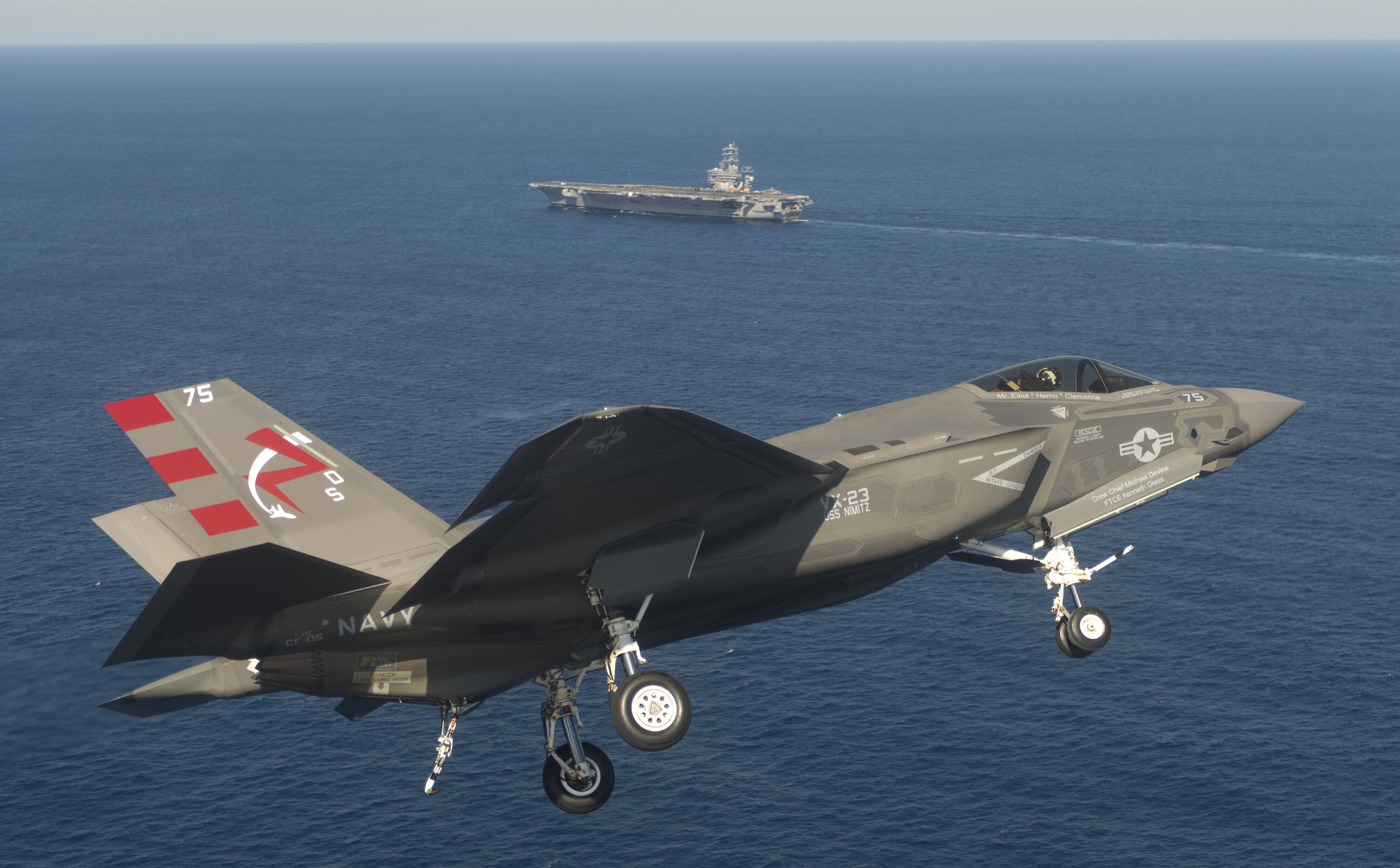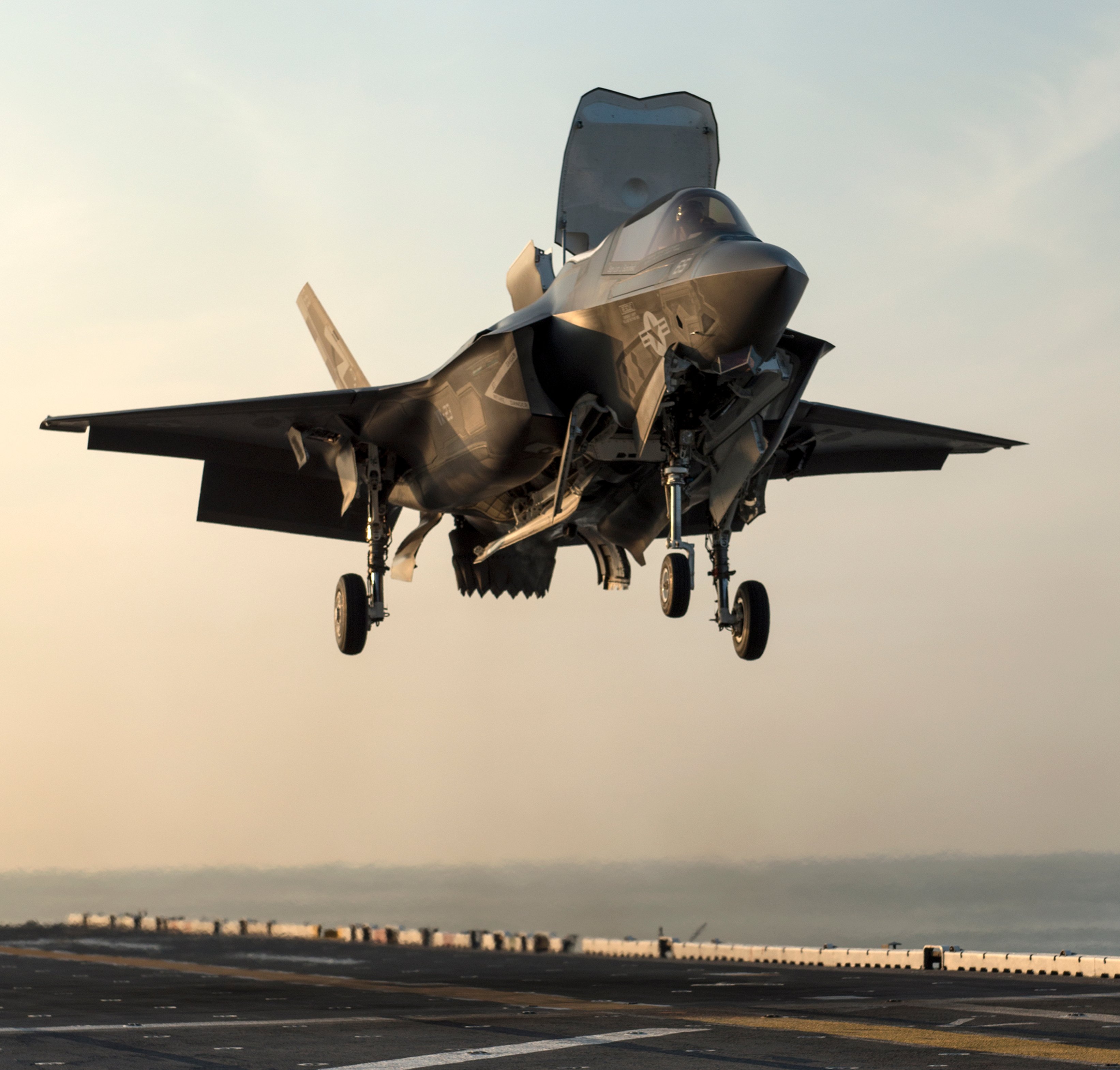
The Navy has increased its projected annual use of the F-35C Lighting II Joint Strike Fighter, adding in 60 hours per plane per year as the service refines its training plans.
The naval aviation community bumped its operational forecast from 25 hours per month in a 2014 estimate to 30 hours a month in the 2015 estimate – or from 300 hours a year to 360 hours a year, Navy spokeswoman Lt. j.g. Kara Yingling told USNI News.
The move was made to “support the fleet’s predicted training requirements,” she said. As the Navy learns more about the yet-to-be-fielded platform, new information could lead to changes in the Navy’s Training and Readiness Matrix, which could then result in changes in the projected flight hours per month.
“The Navy assessment of flight hours required per airframe is based off of an analysis of the current training and readiness requirements,” she added.
“This assessment is periodically updated and refined as the platform continues to mature.”
USNI News understands that the Navy is still working through how much F-35C training would be conducted in simulators and in Live, Virtual and Constructive (LVC) events, which may have contributed to the increase in flight hours per month.
Though subject to change, this move stands in stark contrast to the Air Force, which recently scaled back its operational forecast for its F-35A variant from 400 flight hours per year to 350, according to Air Force Lt. Gen. Christopher Bogdan, Program Executive Officer for the F-35 Joint Program Office.

Bogdan told reporters at the Pentagon last week that the Air Force’s scaled-back use of the planes would actually stretch out the life of the aircraft – the plane is built for 8,000 flight hours, and consuming those hours more slowly means the plane should last about five or six years longer.
“Those very last airplanes in the production sequence in the late ‘30s, now instead of lasting 26-and-a-half, 27 years, now last 32 years – so you’ve actually extended the program from 2064 to 2070,” he explained.
The Air Force, Navy and Marine Corps also revised usage estimates for the life of the program, which ultimately added in 1.6 million flight hours across all three variants between now and 2070 – though the vast majority of those hours are attributable to the Air Force.
Adding in 1.6 million flight hours and six years of operations increased the program’s total cost by about $23 billion, since the military will have to continue buying spare parts, maintaining vehicles and paying for crews during that time.
This cost increase was outlined in the 2015 Selected Acquisition Report, which tracks changes in cost for major acquisition programs in the Defense Department. Bogdan said that, while the SAR technically considers the F-35 program to have increased in cost, the actual cost of operating and sustaining the planes each month has decreased over the past year.
“The real O&S costs of the airplane” decreased 2 to 4 percent from the 2014 SAR to the 2015 SAR, he said, while research and development costs have stayed flat and procurement costs have come down.
“It just so happens that that life extension masks all that savings,” he said of the Air Force stretching out their program.
The Marine Corps did not revise its forecast of how many hours a month it would fly its F-35B planes, spokeswoman Capt. Sarah Burns told USNI News, but it did add about 70,000 flight hours into its program over the life of the planes.
“The increase is due to an adjustment/refinement of the standup dates for our squadrons and a revaluation of how long we will fly the aircraft,” she said in a statement.
“Of those 1.6 million extra hours, only 70,000 are attributable to the USMC. While 70,000 hours is expensive, it’s distributed over six decades and equates to an approximately 3 percent greater number of hours compared to our previous assessment.”





